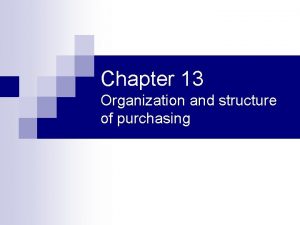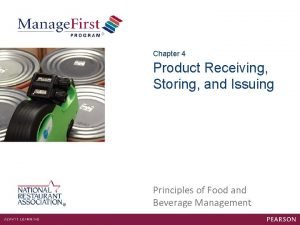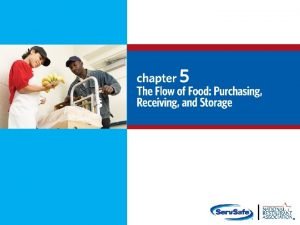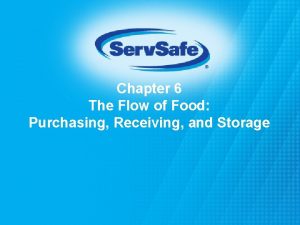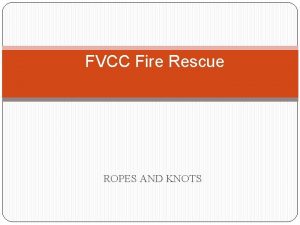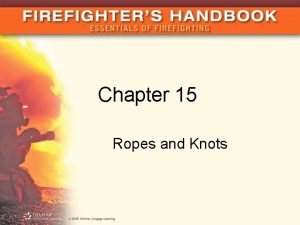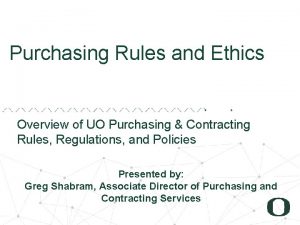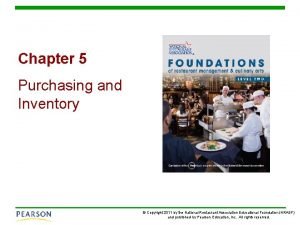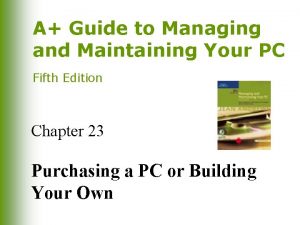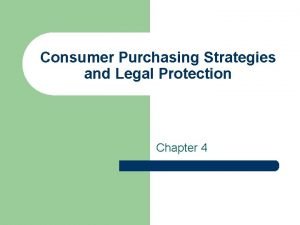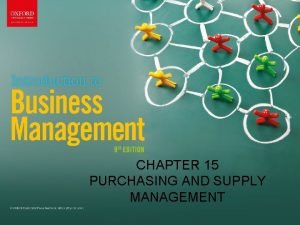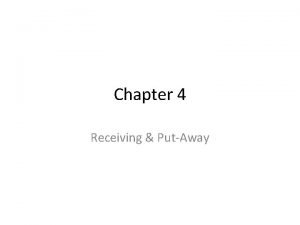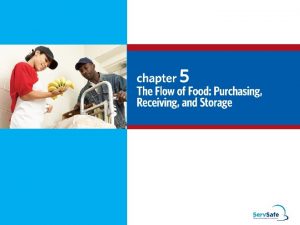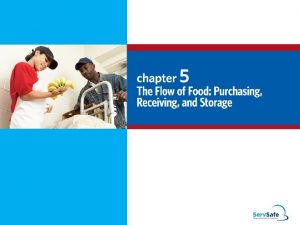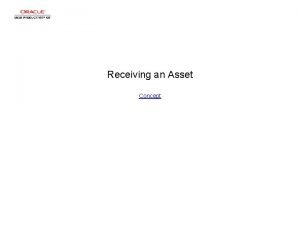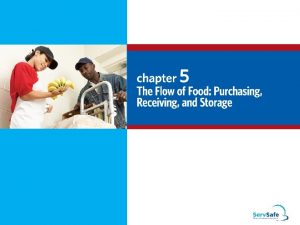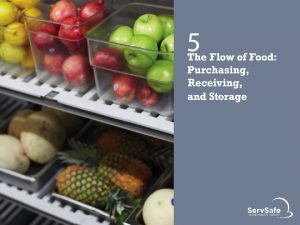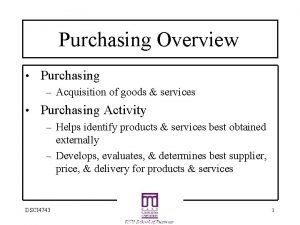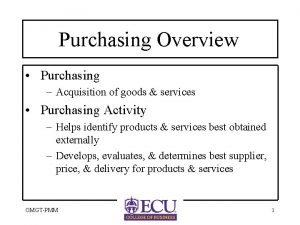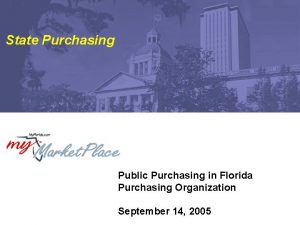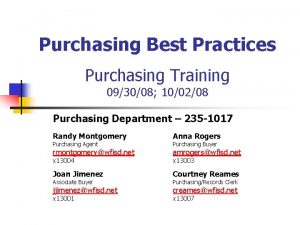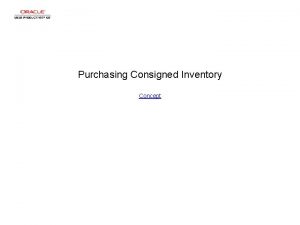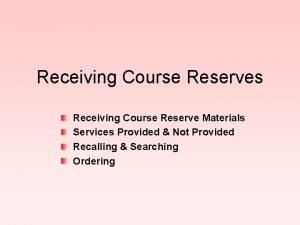Purchasing and Receiving 5 2 Receiving and Inspecting




















- Slides: 20


Purchasing and Receiving 5 -2

Receiving and Inspecting Key drop deliveries: 5 -3 ● Supplier is given after-hours access to the operation to make deliveries ● Deliveries must meet the following criteria o Be inspected upon arrival at the operation o Be from an approved source o Have been placed in the correct storage location to maintain the required temperature o Have been protected from contamination in storage o Is NOT contaminated o Is honestly presented

Receiving and Inspecting Recalls: 5 -4 ● Identify the recalled food items ● Remove the item from inventory, and place it in a secure and appropriate location ● Store the item separately from food, utensils, equipment, linens, and single-use items ● Label the item in a way that will prevent it from being placed back in inventory ● Inform staff not to use the product ● Refer to the vendor’s notification or recall notice to determine what to do with the item

Receiving and Inspecting Checking the temperature of meat, poultry, and fish: ● 5 -5 Insert thermometer stem or probe into the thickest part of the food (usually the center)

Receiving and Inspecting Checking the temperature of ROP Food (MAP, vacuum-packed, and sous vide food): 5 -6 ● Insert thermometer stem or probe between two packages ● As an alternative, fold packaging around thermometer stem or probe

Receiving and Inspecting Checking the temperature of other packaged food: ● 5 -7 Open the package and insert thermometer stem or probe into the food

Receiving and Inspecting Temperature criteria for deliveries: ● Cold TCS food: Receive at 41˚F (5˚C) or lower, unless otherwise specified ● Live shellfish: Receive oysters, mussels, clams, and scallops at an air temperature of 45˚F (7˚C) and an internal temperature no greater than 50˚F (10˚C) o ● Shucked shellfish: Receive at 45˚F (7˚C) or lower o 5 -8 Once received, the shellfish must be cooled to 41˚F (5˚C) or lower in four hours Cool the shellfish to 41˚F (5˚C) or lower in four hours

Receiving and Inspecting Required documents: ● 5 -9 Farm raised fish o Must have documentation stating the fish was raised to FDA standards o Keep documents for 90 days from the sale of the fish

Storage 5 -10

Storage Labeling food for use on-site: 5 -11 ● All items not in their original containers must be labeled ● Food labels should include the common name of the food or a statement that clearly and accurately identifies it ● It is not necessary to label food if it clearly will not be mistaken for another item

Storage Labeling food packaged on-site for retail sale: 5 -12 ● Common name of the food or a statement clearly identifying it ● Quantity of the food ● If the item contains two or more ingredients, list the ingredients and sub ingredients in descending order by weight ● List of artificial colors and flavors in the food including chemical preservatives ● Name and place of business of the manufacturer, packer, or distributor ● Source of each major food allergen contained in the food

Storage Date marking: ● Ready-to-eat TCS food must be marked if held for longer than 24 hours o 5 -13 Date mark must indicate when the food must be sold, eaten, or thrown out

Storage Date marking: ● 5 -14 Ready-to-eat TCS food can be stored for only seven days if it is held at 41˚F (5˚C) or lower o The count begins on the day that the food was prepared or a commercial container was opened o For example, potato salad prepared and stored on October 1 would have a discard date of October 7 on the label o Some operations write the day or date the food was prepared on the label; others write the use-by day or date on the label

Storage Date marking: If: ● A commercially processed food has a use-by date that is less than seven days from the date the container was opened Then: ● 5 -15 The container should be marked with this use-by date as long as the date is based on food safety

Storage Date marking: 5 -16 ● When combining food in a dish with different use-by dates, the discard date of the dish should be based on the earliest prepared food ● Consider a shrimp and sausage jambalaya prepared on December 4 o The shrimp has a use-by date of December 8 o The sausage has a use-by date of December 10 o The use-by date of the jambalaya is December 8

Storage Temperatures: 5 -17 ● Store TCS food at an internal temperature of 41˚F (5˚C) or lower or 135˚F (57˚C) or higher ● Store frozen food at temperatures that keep it frozen ● Make sure storage units have at least one air temperature measuring device; it must be accurate to +/- 3˚F or +/- 1. 5˚C ● Place the device in the warmest part of refrigerated units, and the coldest part of hot-holding units

Storage Rotate food to use the oldest inventory first: ● One way to rotate products is to follow FIFO 1. Identify the food item’s use-by or expiration date 2. Store items with the earliest use-by or expiration dates in front of items with later dates 3. Once shelved, use those items stored in front first 4. Throw out food that has passed its manufacturer’s use-by or expiration date 5 -18

Storage Preventing cross-contamination: ● 5 -19 Store all items in designated storage areas o Store items away from walls and at least six inches (15 centimeters) off the floor o Store single-use items (e. g. , sleeve of single-use cups, single-use gloves) in original packaging

Storage Food should be stored in a clean, dry location away from dust and other contaminants: ● 5 -20 To prevent contamination, NEVER store food in these areas o Locker rooms or dressing rooms o Restrooms or garbage rooms o Mechanical rooms o Under unshielded sewer lines or leaking water lines o Under stairwells
 Purchasing organizational structure
Purchasing organizational structure What are the receiving, storing and issuing facilities?
What are the receiving, storing and issuing facilities? Purchase food from reputable suppliers
Purchase food from reputable suppliers Shellstock identification tags
Shellstock identification tags The flow of food purchasing receiving and storage
The flow of food purchasing receiving and storage Chapter 30 inspecting and testing welds
Chapter 30 inspecting and testing welds Emergency purchase
Emergency purchase Fire knots
Fire knots When inspecting a rope “tactilely” you should
When inspecting a rope “tactilely” you should Uo purchasing and contracting
Uo purchasing and contracting Law of one price exchange rate
Law of one price exchange rate Chapter 5 purchasing and inventory
Chapter 5 purchasing and inventory Buying and selling of securities
Buying and selling of securities Purchasing and maintaining a computer
Purchasing and maintaining a computer Consumer purchasing strategies and legal protection
Consumer purchasing strategies and legal protection Quality decisions as a purchasing and supply activity
Quality decisions as a purchasing and supply activity Loan vocabulary
Loan vocabulary Chapter 6 consumer purchasing and protection
Chapter 6 consumer purchasing and protection Direct putaway
Direct putaway An institution for receiving, keeping and lending money
An institution for receiving, keeping and lending money Kinds of love language
Kinds of love language
